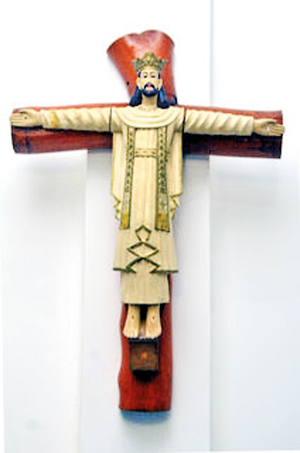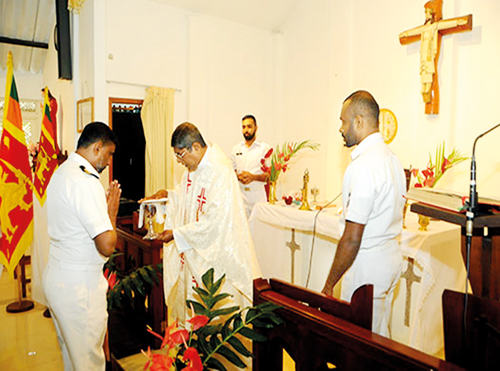“Emily” and the Cross
View(s):Lightning does strike twice. On special days.
On Easter Sunday last year, for instance, when the bombers killed themselves and so many others, it echoed the Easter Sunday air raid of 1942, when the Japanese bombed Colombo and Trincomalee.

Little known story behind this cross in Trincomalee
Again, on Boxing Day, 2004, when the tsunami hit us, we recalled Cyclone “Emily” which hit Trincomalee on the eve of Christmas 1964, almost exactly 50 years earlier, ploughing across the country from east to west before, as the sting in its tail, flinging the Talaimannar-Danushkodi ferry far on to dry land, like wounded whale.
This story, below, of “Emily” in Trincomalee is little known. Posted to Trincomalee from January 1965, I paid a visit in December of 1964 to see the married quarters available to me, and returned to Colombo. The next day, “Emily” hit Trincomalee with devastating effect. I went back soon after, but there were no buildings with intact roofs and every road was blocked by huge trees that had fallen across. Valuable timber but essentially a nuisance, to be got rid of. Many a person made souvenirs and ornamental pieces out of these trees and this is the story of how one man did something more.
That man was A/B (Sec) C.D.de Silva. Off.No. A 1425.He had joined the Army during World War 2, served in Singapore and had been absorbed into the Royal Naval Police. When the Royal Navy quit Trincomalee he was absorbed into the Royal Ceylon Navy’s Security Branch where he served till retirement. A quiet, modest man, he did not flaunt his little-known skill, till he could use it to show that even “Emily” could be used for the betterment of Man – and in praise of God.
Denis was my first cousin. Let his son tell the story in his own words. (SD)
***************
The cross at the Catholic church – Dockyard, Trincomalee
I was residing in the Dockyard at ‘Peyton Cottage” from 1959 and attended school at St. Joseph’s College Trincomalee. In 1964, I was 14 when Cyclone “Emily” hit Trincomalee on Christmas Eve. Luckily we were in Dehiwala, at my grandfather’s place, for the Christmas school holidays.

Denis De Silva
When we returned the entire roof of our house had been completely blown away and dead crows were scattered all over the house! All the household furniture had been destroyed by rain water and a large satin tree had fallen across the garden missing our house by a few feet. All our neighbours had been similarly affected and we had to pull together and start all over again.
I was an altar boy at the Dockyard Catholic Church where the Jesuit Priest, Rev. Father Ciampa S.J (initials not known) from Italy was the Chaplain. One fine day after the cyclone on one of his frequent visits to our home, having seen this large tree he came up with a brilliant idea. He spoke to my father (A/B (Sec) C.D. De Silva (A-1425). He suggested that we make a cross from the large stump of wood of the fallen tree. He knew my father’s talent for making various types of wood craft (“Rook Kala” or “Arborics”) which were on show at our house. He gave us the measurements and a rough design as to how it should be to be more like a cross preserving the natural look of a branch of a tree: not a cross made of planks of wood.
I as a kid together with my father had a big job to saw a branch, clean the bark, sand paper and polish. We had only a saw, sandpaper and pieces of broken glass – and plenty of “elbow grease”. The cross was to be in two pieces, the larger was fashioned from a natural formation and formed the “T”-shaped part of the cross. A separate portion was required for the head and it had to be shaped to look more like a part of the tree.

In recent times: The cross still at the Dockyard church altar
Satin wood, “burutha” is a very hard, close-grained wood and the tree had a tough bark. With our limited tools, it was very hard work. The task took about three to four months when it finally took the shape of a wood craft cross.
The statue of Jesus in robes came from Italy, through Fr. Ciampa. The hands were separate from the body of Christ. The statue was finally screwed to the cross and hung up on the wall behind the church altar of the Dockyard Church. This cross, 56 years old, still stands today.
Many do not know the history behind its maker and the wood/branch used of a satin tree which had fallen during cyclone “Emily”. Perhaps I am the only one who knows this story. I am glad I have had this opportunity to honour my father with this little memory.
Lieutenant (VNR) L.I.de Silva, USP


